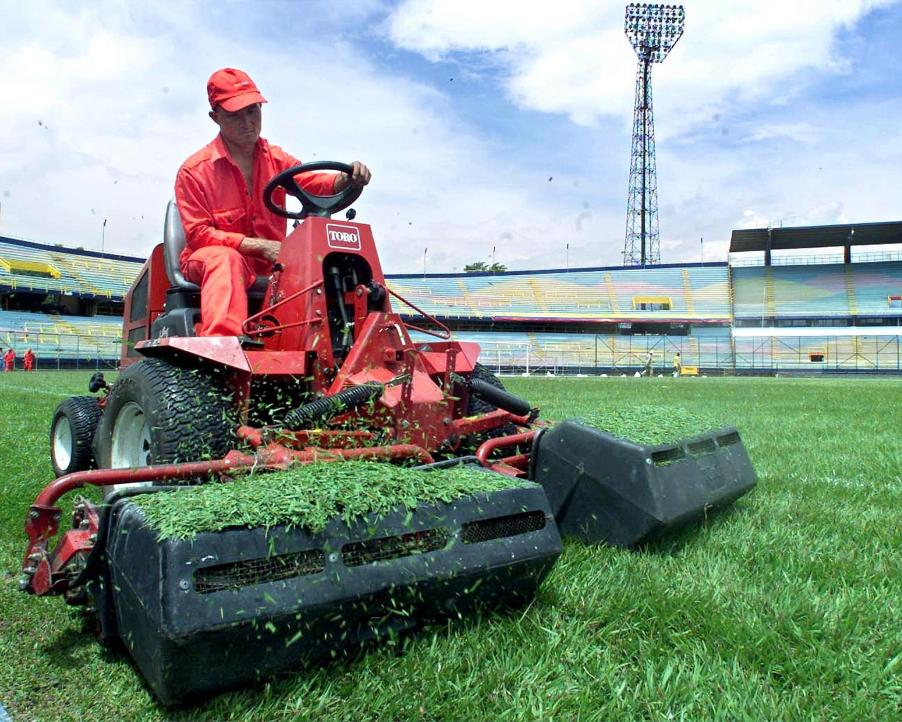
Clearing up Clumped Grass on Your Lawn Mower Is a Step You Shouldn’t Forget
A lawn mower can be a significant investment. The top-of-the-line riding mowers retail for around $3,000 or more. But if you opt for a more affordable but reliable gas-powered push lawn mower, you’ll still be looking at spending a few hundred dollars. Because that’s no small amount of money, it’s best to make sure you’re using your lawn mower in a way that preserves its working life for as long as possible.
Why lawn mower maintenance is critical

Each year, home improvement retailers sell homeowners and property managers tens of thousands of replacement mowers. And in many cases, these replacements were avoidable. But many people don’t take the simple steps necessary to maintain their mower and avoid making common mistakes that wear it down quicker. Often, they don’t know how to handle simple maintenance tasks like how to change oil and put off learning how to do so until it’s too late.
But lawn mowers can be expensive to buy—and to own. Beyond the initial expense, you’ll need to cover fueling costs, which can vary considerably depending on gas prices. However, these costs are minimal compared to replacing a broken lawn mower. Even if you don’t replace it, some repairs, such as fixing a bent crankshaft or a head gasket, can cost you almost as much as the lawn mower itself.
So you’ll want to avoid the kind of routine wear and tear that can seriously damage or even destroy your lawn mower before the end of its working life. One of the easiest ways to do so is by clearing clumped grass out of your mower.
How clumped grass can cause significant damage to your mower
When grass builds up under your lawn mower deck, cleaning is essential. Without regular cleaning, the accumulated grass will rust out the deck, and the mower will work less effectively given the reduction in airflow. Moreover, according to Tom’s Guide, the accumulated grass clumps left on your lawn will block your grass’s sunlight, leading to patches of dead or yellow leaves and additional landscaping costs. But to keep grass clumps from damaging your mower, you’ll need to clean it consistently.
Before cleaning a gas-powered mower, empty the gas can first. Then tilt the underside to access the spark plug. Remove the spark plug and detach the blade to prevent accidents. Then, scrape off the caked-on grass with gloved hands, a flat pry bar, metal putty knife, or wire brush. You may need to wet the deck slightly if the grass is tough to remove. And to get the grass residue off, use an air hose to blow away the remains. Then reassemble your freshly cleaned lawn mower.
You can apply a protective coating to the underside. There are plenty of brands for sale in stores, but you can also use vegetable oil to the same effect. However, while a coating makes your deck resistant to grass build-up, it does not replace the need for periodic cleaning. Regular maintenance is essential and includes cleaning up grass build-up and changing your engine oil, replacing the spark plug, replacing and cleaning your air filter, and sharpening and balancing your lawn mower blades.
Other critical lawn mower maintenance tasks
When you first buy your lawn mower, read your owner’s manual. Don’t just skim it to get your mower operational; leave it in a drawer somewhere. Your manual will give you the information you need to keep your mower running for as long as possible. It will include items like how often you should change your engine oil, which is vital to keep your mower running smoothly.
Over time, you’ll use up the oil you have, and operating your mower without it can damage your engine. Or your oil can become contaminated if it sits too long, such as between seasons. So you’ll need to replace it or top it off periodically.
You’ll also need to replace your spark plug periodically, usually once a year, to ensure your mower is working at peak efficiency. Replacing and cleaning your air filter is also important to ensure your mower works optimally. And by having a professional sharpen and balance your blades, you’ll protect them from the accumulated wear and tear your mower will absorb from rocks, branches, and other debris it runs across.
These steps may seem a bit of a burden. But in the long run, a little time and effort every so often can help keep your lawn mower operating as long as possible and save you big bucks on repair costs.


